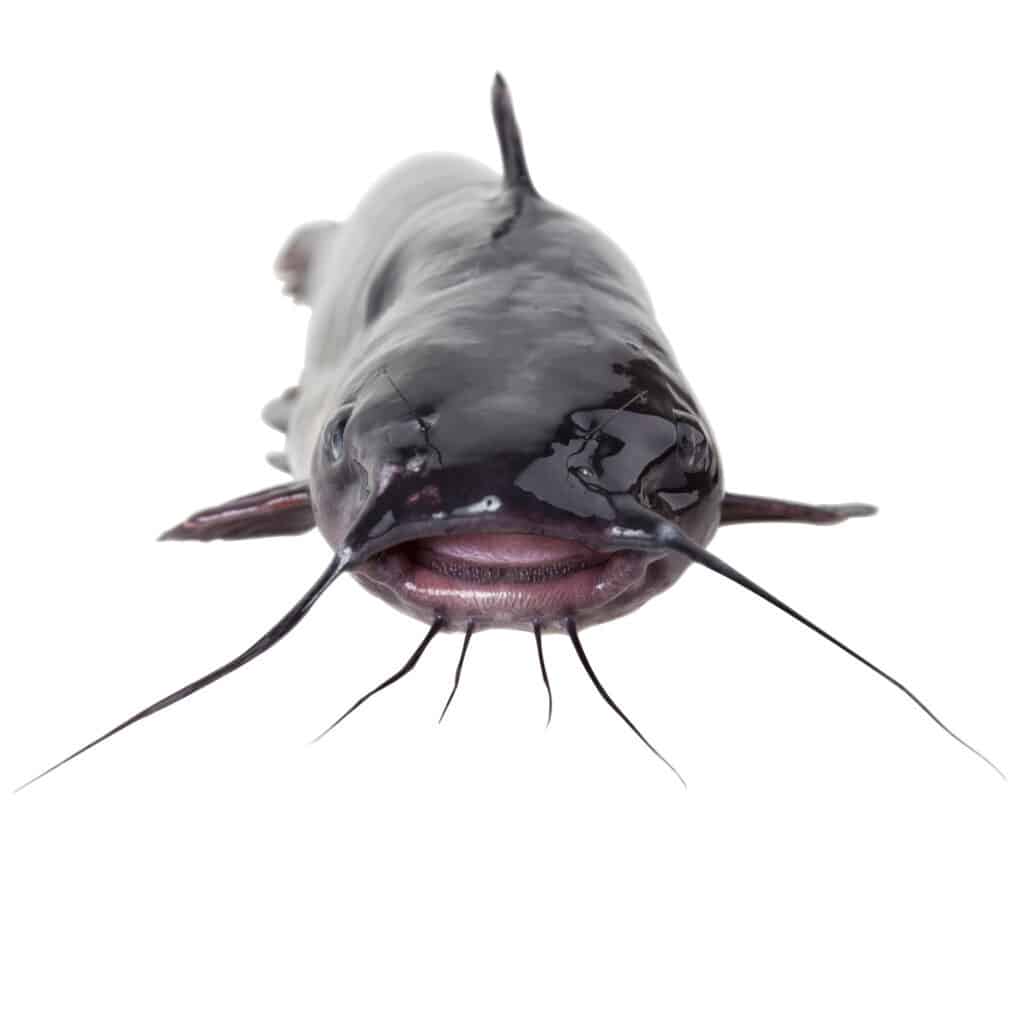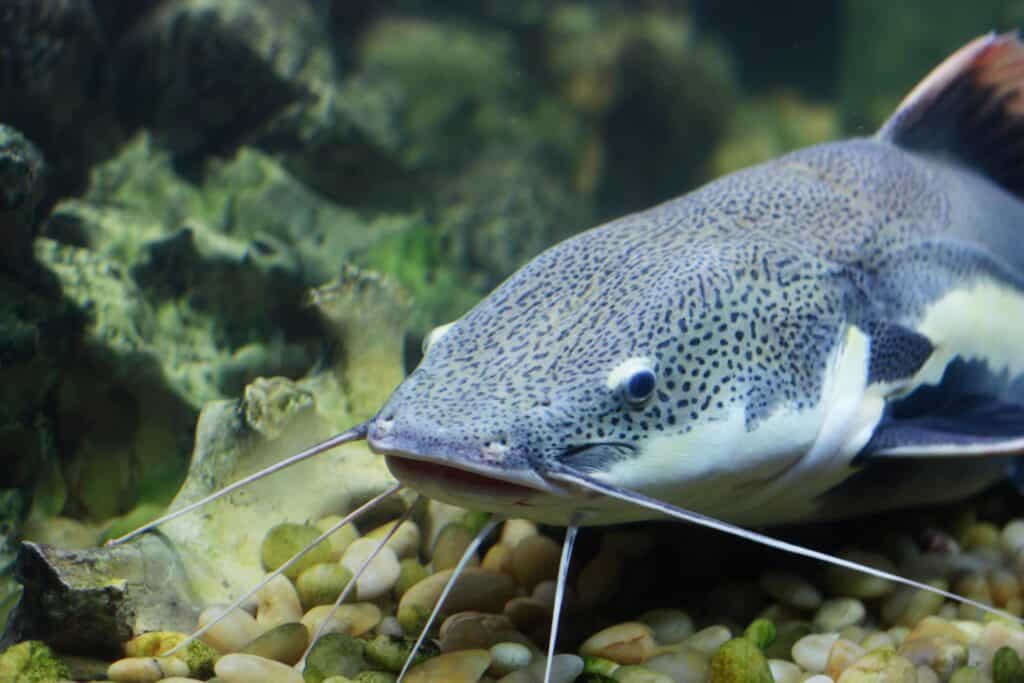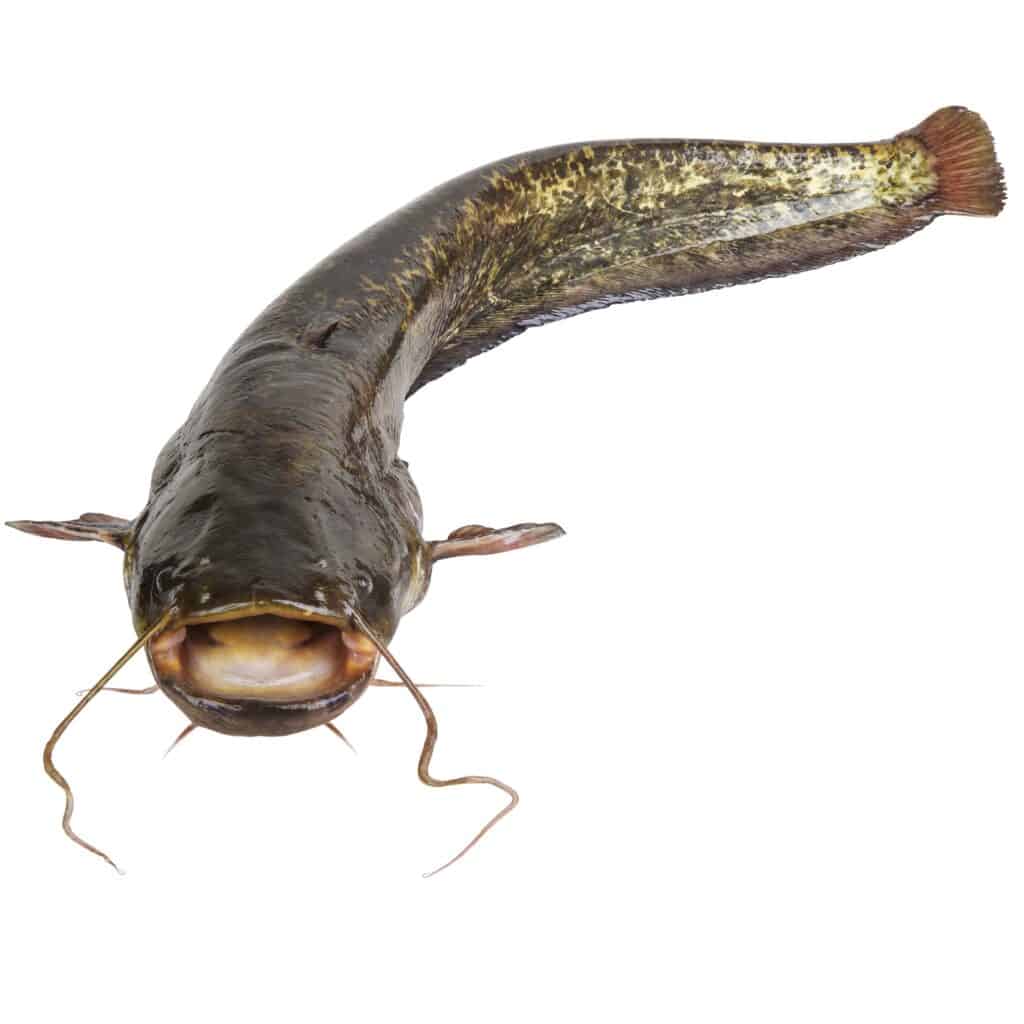Have you ever been fishing? Maybe you are planning a fishing trip this summer with friends and family. If you are planning on going fishing for catfish, you may be wondering if they have teeth.
Catfish have unique and useful teeth. Their teeth are small and dense rather than large and sharp. Catfish are omnivores that eat by sucking and gulping rather than biting and chewing. Their teeth are shaped inwards and are used to keep prey in their mouth.
Can catfish harm a person by biting them? They can certainly grow to be large and powerful fish, so it’s important to handle them with care. Continue reading to learn what else you need to know about catfish before going on your next fishing adventure.
Can a Catfish Harm a Human by Biting?
Catfish teeth are small enough that they would not be able to bite off a finger. The way that their teeth are shaped actually makes it impossible for them to bite because they are angled inwards. Their teeth may be able to scratch your skin or even possibly break the skin, but catfish do not have strong enough teeth to bite off a finger or cause any serious harm to you.
Even if someone were to put their hand in a catfish’s mouth to remove a fish hook, the catfish would not be able to bite you. Catfish teeth are small and insignificant in comparison to many other animals and fish. If a catfish were to bite you somehow, their bite would feel like a sting from sandpaper. It would be unpleasant, but it wouldn’t cause any serious harm to you. It’s unlikely to even break the skin.
If you have been bitten by a catfish, you need to clean the wound, and if it broke the skin, you need to keep a clean cover over the broken skin until it has scabbed over and begun to heal itself.
Do Catfish Sting?
Catfish do not sting, but they can cause discomfort and harm you if you are not careful. Catfish have three main body parts that can poke you: the dorsal fin, pectoral fin, and whiskers.
Catfish Whiskers
Catfish have gotten their name from the whiskers you can see around their mouth. Interestingly enough, these are not whiskers like the ones you may find on a common cat or dog. These whiskers give catfish an advantage when it comes to looking for food.
Catfish have thin long “tendrils” (whiskers) that come from around their mouth. These tendrils around their mouth actually work as a food sonar for the catfish. They can pick small amounts of decaying protein that have been drifting through the water. This helps the catfish feed on dead chunks of meat across long distances.
Tendrils on catfish are completely harmless to you. There is a big misconception about catfish whiskers/tendrils harming people if you touch them or if they touch you, but it is only a misconception. They are as soft as the whiskers on a common cat or dog.

Dorsal and Pectoral Fins
Dorsal and pectoral fins are the fins that people should be worried about when they are picking up or swimming with catfish. These fins are located behind the catfish’s head on either side, as well as on the top of the fish behind their head. These fins are harmless when you touch them from the back, but there is a hard spine located in the fin that is the length of the fin.
The tips of these fins are pointed and very sharp. Smaller catfish have especially hard and sharp spines in their fins. These spines do not sting! You can touch them without causing any harm to yourself. The harm comes when the spines have punctured and possibly broken your skin.
It is important to remember that catfish are not aggressive by nature. This is an act of defense if the catfish begins to feel nervous or intimidated. Most people get punctured by a catfish’s spine by accidentally stepping on them or handling them wrong after catching them.
While the spines do not sting, they do contain venom. This venom causes hemolytic and edema if the skin is punctured from the spines. This means there will be swelling (edema) around the punctured area, and there will be an increased blood flow to the injury (hemolytic).
Smaller catfish are usually the fish that harm people. This is because the spines in their fins are sharper. Larger catfish have larger spines that are often duller because of the width of their spine.
A cut from a catfish’s spines is not life-threatening, but it can be very painful. If you have gotten cut from the spines of a catfish, you need to clean the wound immediately. If you do not, there is a possibility of infection.
This non-lethal spine ability is true for most species of catfish found in freshwater. It is important to note that there are species of poisonous catfish that can cause fatal injuries to other animals and even humans.
When a catfish’s spine punctures your skin, the membrane around the venom gland is torn, which releases the venom into the catfish’s prey. The venom breaks down red blood cells which cause serious and intense pain. It also reduces blood flow and causes muscle spasms.
According to Jeremy Wright, the real danger is caused by the initial jab of the spine, but the bacterial and fungal infections that the puncture wound can cause. Sometimes when a catfish’s spine has jabbed someone, part of the spine or pieces of tissue can break off and stay in the wound. Complications from infections can affect someone for several months.
Click here to read an article written by the Michigan News about catfish.
What to Do if You Have Been Punctured by a Catfish Spine
As mentioned previously, if you were jabbed by a catfish in freshwater, there is a good chance you were not punctured by a poisonous catfish. Although, there are many different species of catfish, and it can be difficult to locate where all poisonous ones live compared to the non-poisonous ones. If you have been punctured by a catfish, you should go to the nearest urgent care. They will be able to help you and give you medicine to help with the pain, redness, and inflammation caused by a catfish puncture.
If you were punctured by a catfish and are far from an urgent care or an emergency room, follow the steps below to care for your injury before you can receive medical attention.
- Begin by immersing the wound in the hottest water you can tolerate. This will help to relieve pain from the injured area. Try to keep the wound in the hot water for as long as you can. You should begin to feel relief from pain and it will help flush out poison and germs from the wound.
- If any of the spines broke off and were left in the wound, they should all be removed by tweezers. Make sure you do not leave any of the spines in the wound because they can cause infection. The wound should now be fully scrubbed and irrigated with fresh water. If you are worried about any bacteria that might have gotten in the wound, clean out the wound with hydrogen peroxide.
- The wound should now be completely closed with either tape or be sewn together. Cover the wound with bandages or keep it wrapped to allow it to heal and stay clean.
- To take care of the pain caused by the catfish puncture, you can take one to two acetaminophen tablets every six hours. You could also take one to two ibuprofen tablets every six to eight hours.
Click here to read E Medicine Health’s article on a catfish sting (puncture).
How to Properly Hold a Catfish

Now that we know about the fins on a catfish, we can discuss how to properly hold a catfish. As previously mentioned, most catfish punctures happen by stepping on them or handling them after being caught. Knowing how to properly handle and hold a catfish can help prevent a very painful wound.
When you catch a catfish, you need to be extra careful around the small fish. The spines on a catfish begin to dull when they reach about 16-18 inches in length. If you have caught a catfish and it is really small, it is recommended you first put the fish in a net before you attempt to grab the fish to remove the fish hook.
There are different approaches to holding catfish depending on their size. You can attempt to hold all of them the same way, but here are some tips to improve the handling of a catfish:
Smaller Catfish
Holding a catfish from the top is the easiest way to handle a small catfish. Grab the catfish from behind the dorsal and pectoral fins to avoid the spines that are hiding in them. Place your forefinger and thumb behind the dorsal spine. On smaller catfish, you will be able to get a good grip in this position because of the smaller width and size of the fish.
When you attempt to hold larger fish, this approach may not be as effective because the fish will be too wide to get a good grip on. When the catfish exceeds two to three pounds, you should not be attempting to hold them in this way. You can try holding the fish from going in front of the dorsal fin on the top, but still behind the side pectoral fins. You need to still make sure you are being careful as the dorsal fin in particular has a greater chance of stabbing you at this angle.
Medium Catfish
Most medium-sized catfish will be able to be held the same way as a small catfish. Medium catfish range from one to two pounds, all the way up to about seven pounds. As previously mentioned, if your catfish exceeds around three pounds in weight, you should consider holding the fish with your hand located in front of the dorsal fin, while still placing it behind the pectoral fins.
Holding a catfish in this way makes it fairly easy to hold and handle until they have reached a size that your hands can no longer hold. Depending on the size of your hands and your own strength, you may have to hold a medium catfish differently.
If you have a fish that is too wide to hold from around its body, you can attempt to handle the fish with the “lip grip”. This can be done by holding the fish from its open mouth. As we have already discussed, catfish do have teeth but they are unable to bite you. Even if you do manage to shove your hand down far enough that the catfish can attempt to hold you down with its teeth, the teeth are not very sharp and they are small.
This is a good handle to use if you are quickly transporting your catfish from one area to another. You do have to ensure you have a strong grip in this position as the fish may attempt to wiggle itself free from your grasp.

Big Catfish
The great thing about catching larger catfish is the spines are dull and a lot less likely to puncture you while handling the fish. When you catch a larger catfish, begin by scooping the fish into a net as you reel it in. Remove the hook by securing the fish with the “lip grip”.
While you are taking photographs or transporting the fish, continue to use the “lip grip” to hold and handle the fish. Releasing the live fish should also be done using the “lip grip”. Practicing catch and release on larger fish is a good rule to keep in mind.
One thing to keep careful of for the big fish is actually their mouths. Their mouths are more dangerous than their fins. While the fins have grown larger and that makes them dull, so have their teeth, and this gives the fish a stronger bite and grip if you get your hand caught in there.

